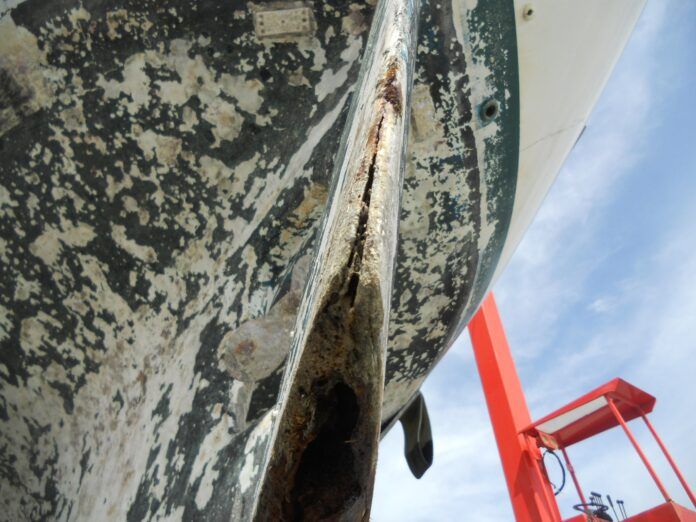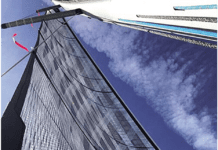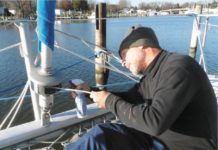
You’ve been bitten by the sailing bug and every spare minute is spent searching online for that perfect vessel. You’ve narrowed it down to a few. One of them is located near you, while the other is further than you care to drive to, unless of course she is “The One.” So now you ponder the question if a survey is needed.
If the vessel is under $5,000, you can probably forgo the survey and take a chance. However, if you don’t want to waste your hard-earned money, then an accredited marine surveyor should be called. They will be your savior in the long run with their unbiased findings.
The first thing the surveyor will ask you is what kind of survey you need. Since you are buying the sailboat, you will want to get a pre-purchase survey. The surveyor will spend many hours inspecting the vessel and then write up a detailed report. The report can consist of up to twelve or more pages, including several photographs. You are welcome to join them during the inspection.
What about the vessel that is far away? The pre-purchase survey will give you a report on the entire vessel along with hundreds of photos. You can ask the surveyor to send you a video of a walk-through as well. At this point you will be able to decide whether it’s worth your time to drive and see your dream boat.
WHAT’S INVOLVED IN A PRE-PURCHASE SURVEY?

The pre-purchase survey gives a complete report of the vessel including its visual condition. The surveyor will first give a general description of the vessel commenting about the vessel’s make, length, width, colors, construction material, the condition of the exterior and interior wood, the cushions and its fabric. They will describe the interior and exterior layout and their overall thoughts on the vessel’s condition. This survey gives in-depth details on recommended or necessary repairs. The client will have an idea of the money needed to be spent to have the vessel seaworthy. The report also serves the client as a negotiating tool. The vessel should be hauled out to do a full inspection below the waterline. A sea trial is recommended.
WHAT WILL THE SURVEYOR LOOK AT?
Obviously, each sailboat is different, but on average they will inspect the following and include it in their report.
DECK, HULL AND COCKPIT
These are all inspected, sounded and tested for moisture. The keel is inspected and if bolted-on, the bolts are inspected from the interior of the vessel. Stanchions, chainplates, mast, boom, hatches, anchor, lockers, furlers, winches and helm are all inspected thoroughly. The rudder and all through-hulls are also inspected.
RIGGING
The standing rig is visually inspected. If any defects are found, a licensed rigger is recommended to confirm replacement and costs. The running rig is much easier to inspect and replace if needed.
INTERIOR
A complete inspection of the saloon (cushions), galley (testing the stove, refrigeration, water), sleeping quarters, hatches, ports and chainplates. The head is inspected and the type of toilet described in the report. Composting toilets are getting more common, and they eliminate the use of a holding tank in most cases.

Seacocks are tested to make sure they can open, close and are corrosion free. Their location is noted in the report. The freshwater tank, holding tank, hot water tank are all inspected for leaks. The surveyor will look for water intruding from the hatches and ports. The surveyor will also inspect the stowage compartments and their location. The bilge will be inspected for water or signs of diesel which would indicate a possible leak from the engine or diesel tank.
ELECTRONICS AND SAFETY EQUIPMENT
All electronics are tested. This will include the chartplotter, VHF radio, radar, interior and exterior lights, bilge pump and any other electronics the vessel may have. The safety equipment is carefully inspected assuring it is in working order and not outdated. All components are itemized for the client.
ELECTRICAL
The AC and DC system panels and all wiring will be inspected. A detailed report of the DC system is important. The amount of batteries that are in the house bank, starter battery, their type and condition. Solar, wind, generator will also be noted in the report.
ENGINE

The engine will be visually inspected and started. Checking for any leaks, belt wear, wiring, filters and overall condition. The engine hours will be indicated in the report if available. If the client requires an oil analysis, this can be sent to a third party and the results sent back to the client.
SAILS
Sails should be inspected but a large and clean area is needed. This not always possible.
HOW IS AN INSURANCE SURVEY DIFFERENT?
Prior to an insurance company providing you coverage, they will usually ask for a survey report from an accredited marine surveyor. This type of survey isn’t as detailed as the pre-purchase. Insurance companies are not interested in knowing how pretty the vessel is or its color scheme.
The surveyor will inspect the major components of the vessel to ensure it is seaworthy. The major concerns are the hull, keel, rudder, mast, through-hulls, seacocks, electronics, engine, shaft and the electrical integrity. They want to know if propane is being used for cooking or heating and if any leaks are present. They want to ensure the boat will not sink or catch fire for unnecessary reasons. Basically, they want to avoid a payout.
The surveyor’s recommendations of items that require immediate attention will at times need to be done prior to the policy being finalized. Some insurance companies approve an in-water survey, whereas others require a complete haul-out. A sea-trial is not necessary. The report will only be a few pages and include a few photographs. The survey price is usually less since less time is spent on the inspection.
CONCLUSION
As you can see, the real difference between a pre-purchase and insurance survey is the details in the report. Included in both reports will be the registration country of the vessel, its hull and serial number. If you choose to forgo the initial pre-purchase survey, you will need an insurance survey regardless. Best to avoid any possibility of disappointment and get the pre-purchase survey from the start which will also serve as your insurance survey.




































